
17 July, 2024
The Production Journey of a Promotional Metal Keyring
Creating a promotional metal keyring involves a detailed and intricate process, from the initial design concept to the final product ready for distribution. Today we are going to do a step-by-step technical overview of this journey and see how these little marvels are actually created.
Conceptualization and Design
1) Idea Generation
Understanding the Purpose: The initial step is to clearly define the keyring's purpose. Is it for brand promotion, a commemorative event, or as part of a corporate gift set? This purpose guides the entire design process.
Identifying the Theme and Audience: The theme should resonate with the target audience. For instance, a youthful, trendy design might appeal to a younger demographic, while a more elegant and understated design could attract a corporate audience.
Brainstorming and Research: Creative brainstorming sessions, often involving designers, marketing teams, and sometimes focus groups, are essential. Market research plays a critical role in understanding current trends, competitor products, and consumer preferences.
Client Consultations: Direct consultations with clients are crucial for aligning the design with their vision and objectives. This might involve discussing branding elements, such as logos and company colours, and how they can be effectively incorporated into the keyring design.
2) Design Drafting
Using Design Software: Tools like Adobe Illustrator or CAD are used to create a precise and detailed digital mockup. These tools allow for adjustments in size, shape, and design elements with high accuracy.
Detailing Specifications: The mockup includes specific details like dimensions, weight, type of metal to be used, and any additional materials like enamel or gemstones. For keyrings with engravings or embossed designs, the mockup will detail these elements' depth, style, and placement.
Visualising the Final Product: These software tools offer the ability to visualise it in 3D, providing a realistic view of what the finished product will look like. This is crucial for identifying any potential design issues before the production begins.
3) Client Approval
Presentation and Feedback: Once the initial design is ready, it's presented to the client. This might be done through digital files, 3D renderings, or even a physical prototype if necessary.
Incorporating Revisions: Feedback from the client is critical at this stage. They may request changes in design, colour, material, or other aspects. The design team works on these revisions until the client is satisfied.
Final Approval: The design is finalised only after the client has fully approved it. This approval is often required in writing to ensure both parties agree on the design before moving to the production phase.
Aligning with Branding Goals: Throughout this process, ensuring the design aligns with the client's branding and promotional objectives is crucial. The final product should effectively represent and promote the client’s brand identity.
Material Selection
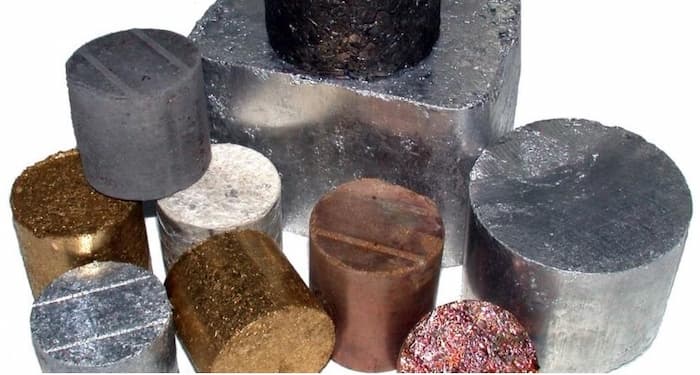
The choice of metal (e.g., stainless steel, aluminium, brass) depends on factors like durability, weight, cost, and appearance. Each metal has its unique properties and suitability for different design requirements. Below are the main types of metals used in the manufacturing process, though this list is not exhaustive
Choosing the right metal for a promotional keyring is critical as it impacts the item's durability, weight, cost, appearance, and overall appeal. Here's a closer look at the properties and benefits of commonly used metals:
1) Stainless Steel
Durability: It is highly durable, and resistant to rust, corrosion, and tarnishing, making it ideal for keyrings that are used daily and exposed to various elements.
Appearance: It has a sleek, modern appearance with a silvery finish that can range from matte to shiny, depending on the polishing.
Weight: It is moderately heavy, imparting a feeling of quality and substance without being too bulky.
Cost-Effectiveness: While not the cheapest, its durability makes it a cost-effective choice in the long run.
Suitability: Perfect for both simple and intricate designs, and it's especially good for items that need to convey a modern or professional image.
2) Aluminum
Lightweight: It is much lighter than stainless steel, making it ideal for keyrings that shouldn’t add significant weight to a keychain.
Customization: It can be anodised to add colour, offering a range of customisation options for more vibrant designs.
Cost-Effective: Generally cheaper than stainless steel, it’s a good option for large-scale productions where budget is a concern.
Durability: While not as durable as stainless steel, it still offers reasonable resistance to corrosion and wear.
Suitability: Great for promotional items where a lighter touch is needed, and for designs that require vibrant colors.
3) Brass
Aesthetic Appeal: Brass has a classic, vintage appeal with its golden hue, which can add a touch of elegance to the keyring.
Malleability: It’s more malleable than stainless steel, allowing for more intricate designs and detailed embossing or engraving.
Tarnishing: Brass can tarnish over time, which may require polishing but also can add an antique look that might be desirable in some designs.
Weight: It has a substantial feel, similar to stainless steel, adding perceived value to the keyring.
Cost: Generally more expensive than aluminum but offers a high-end look that can justify the cost.
Suitability: Ideal for elegant, classic designs or where a ‘luxury’ feel is desired.
4) Iron
Strength and Durability: Iron is known for its strength and durability. It is highly resistant to deformation and wear, making it suitable for keyrings that need to withstand frequent use.
Weight: Iron is heavier than aluminum and brass, which can give a keyring a robust and premium feel.
Cost: Generally, it is cost-effective, especially for bulk productions.
Finish Variability: It can be coated or painted to prevent rust and to add aesthetic appeal.
Suitability: Ideal for straightforward, durable designs where weight and a feeling of solidity are desired.
5) Copper
Aesthetic Appeal: Copper has a unique reddish-brown colour that can give a keyring a distinctive and elegant look.
Malleability: Like brass, copper is malleable, allowing for detailed and intricate designs.
Tarnishing: It tarnishes over time, developing a patina that can add character, though some may prefer to maintain its original sheen with regular cleaning.
Antimicrobial Properties: It has natural antimicrobial properties, which can be a unique selling point.
Cost: It is generally more expensive than materials like aluminium but is valued for its unique appearance.
Suitability: Best for luxury or vintage-themed keyrings and designs where the unique colour of copper is a central element.
6) Zinc Alloy
Versatility: Zinc alloys (often combined with metals like colour, copper, and magnesium) are versatile and commonly used in die casting.
Durability: These alloys are strong and durable, with good resistance to corrosion.
Affordability: It is more affordable than pure metals like copper or brass.
Finish Options: It accepts various finishes, including plating, painting, and polishing, making it adaptable to different design aesthetics.
Suitability: Great for detailed and complex designs due to its casting properties, and where cost-effectiveness is important.
7) Nickel
Appearance: Nickel has a bright, silvery appearance that can add a modern and sleek look to the keyring.
Corrosion Resistance: It is highly resistant to corrosion, which is crucial for items like keyrings that are frequently handled.
Allergy Considerations: Some people are allergic to nickel, which could be a consideration in its use for consumer products.
Weight and Strength: It has a moderate weight and is strong, making it suitable for durable and long-lasting keyrings.
Cost: Generally, it is more expensive than zinc alloy but offers a distinct appearance and durability.
Suitability: Ideal for contemporary designs where a shiny, metallic finish is desired.
Mould Creation
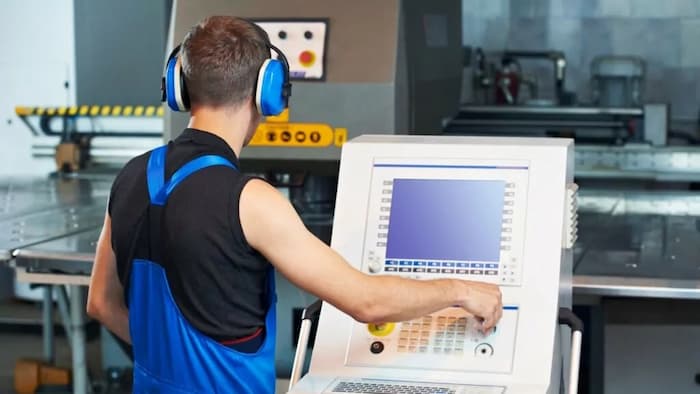
The process of mould creation is a critical phase in the manufacturing process. It involves precision engineering and advanced technology to ensure that the final product accurately reflects the intended design. Here's a detailed look at this process:
1) Preparation for Mould Design
The finalised keyring design is translated into a mould design. This involves converting the 2D digital design into a 3D model that will be used to guide the mould-making process.
2) CNC (Computer Numerical Control) Machining
The 3D mould design is input into a CNC machine's software. CNC machining involves the use of computerised controls to manage the tools and machinery required for manufacturing.
A suitable metal block is chosen for the mould. The choice of metal for the mould depends on factors such as the type of metal used for the keyring, the level of detail required, and the expected production volume.
3) Carving the Design
The CNC machine uses cutting tools to carve the design into the metal block. This involves removing metal from the block to create a cavity that matches the shape and details of the keyring design.
The cutting tools are controlled with high precision, often down to fractions of a millimetre, to ensure that the cavity accurately reflects the design. For more complex designs, the machine may use different tools or multiple passes to achieve the required level of detail.
4) Finishing the Mould
After the initial carving, the mould undergoes a smoothing and polishing process. This is crucial to ensure the final finish is high-quality with no sharp edges or unwanted marks.
The completed mould is then inspected for accuracy and quality. This may involve measuring the mould to ensure it matches the design specifications and checking the surface finish.
5) Testing the Mould
Before full-scale production begins, the mould is often used to produce a small number of keyring prototypes. This is an important step to verify that the mould produced ones that meet the expected standards in terms of appearance and quality.
If any issues are identified during the prototype production, the mould may need to be modified. This could involve additional CNC machining to adjust the mould or further polishing to refine the surface.
6) Preparing for Mass Production
Once the mould is finalised and tested, it is assembled into the larger production machinery, such as a die-casting or stamping press, ready for mass production of the keyrings.
Die-Casting or Stamping
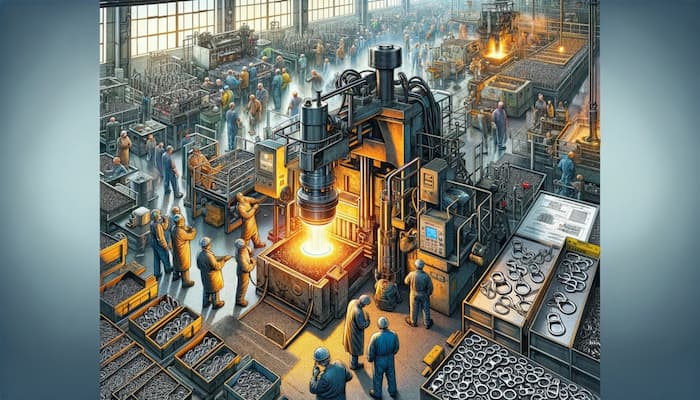
The manufacturing process often involves either die-casting or stamping, depending on the complexity of the design and the properties of the metal used. Both processes have distinct technical aspects that make them suitable for different types of keyring designs.
1) Die-Casting Process
Preparation of the Die: The die, which is essentially a mould, is created as per the finalised keyring design. It consists of two halves that come together to form the cavity into which the metal is injected.
The die surfaces are treated or coated to facilitate the easy release of the cast part and to extend the life of the die.
Melting the Metal: Metal (such as zinc, aluminium, or magnesium alloys) is melted in a furnace at a specific temperature. The choice of metal depends on factors like strength, weight, and appearance.
Injection into the Die: The molten metal is injected into the die under high pressure. This pressure is maintained until the metal solidifies. The high pressure ensures that the metal fills every part of the die, capturing all the intricate details of the design.
Cooling and Solidification: After the metal is injected, it is allowed to cool and solidify in the die. The cooling process must be controlled to prevent defects in the final product.
Ejection and Trimming: Once the metal has solidified, the die is opened, and the cast keyring is ejected. The excess metal, known as flash, is trimmed off.
Post-Processing: The cast keyrings may undergo additional processes such as polishing, plating, or painting, depending on the design requirements.
2) Stamping Process
Preparation of the Stamp Die: Similar to die-casting, stamping requires a die, which in this case is a stamp that will press the metal into the desired shape. The die is crafted from durable materials to withstand the pressure of stamping.
Selection of Metal Sheet: A flat sheet of metal, like stainless steel, brass, or copper, is selected based on the desired properties of the final product.
High-Pressure Stamping: The metal sheet is placed in the press, and the stamp die is brought down with high pressure. This pressure forces the metal sheet to conform to the shape of the die. For more complex designs, a series of stamping operations may be required.
Trimming and Cleaning: Excess material from the stamped metal is trimmed off, and the keyrings are cleaned to remove any oils or residues from the stamping process.
Post-Processing: As with die-casting, they may also undergo additional finishing processes such as polishing, engraving, or coating.
Both die-casting and stamping are effective methods for producing metal keyrings, each with its specific technical considerations. Die-casting is more suitable for complex, intricate designs and for metals with a lower melting point, while stamping is preferred for simpler designs and for metals that are more malleable and can be easily shaped under pressure. The choice between these two methods depends on the design, the required physical properties, and the production volume.
5. Detailing and Finishing

After one of the above processes has been completed it then comes down to the detailing and finishing. Depending on what is needed, there are several processes involved
1) Trimming and Polishing
Trimming Process: After the keyrings are cast or stamped, they typically have excess material, known as flash, along the edges. Trimming is the process of removing this excess. It is done using a combination of tools and machines, like die trimmers or hand tools, for precision.
Polishing Techniques: Polishing is crucial for achieving a smooth and attractive finish. This can be done mechanically, using buffing wheels and abrasive compounds, or chemically, through processes like electropolishing. The choice of technique depends on the metal type and the desired finish.
Achieving Desired Aesthetics: Polishing not only removes any surface imperfections but also enhances the visual appeal of the keyring, giving it a shiny and refined look.
2) Engraving or Embossing
Engraving Methods: Engraving involves etching designs onto the surface of the keyring. Laser engraving is popular for its precision and ability to produce detailed and consistent results. Mechanical engraving, which uses a rotating cutting tool, is another option, particularly for deeper engravings.
Embossing Process: Embossing creates a raised design on the surface. It involves pressing the metal between a male and female die to form a three-dimensional design. This technique is often used for larger, simpler designs.
Adding Customisation: Both engraving and embossing are key for personalisation, allowing for the addition of logos, text, and intricate patterns that reflect the brand or message the keyring is intended to convey.
3) Plating and Coating
Plating Options: Plating involves covering the keyring with a thin layer of another metal. Common choices include nickel, chrome, and gold. Each type of plating offers different aesthetic and protective qualities. For example, chrome plating gives a highly reflective finish, while gold plating adds a luxurious look.
Coating for Protection: Coatings are applied to protect it from elements like oxidation and wear. This could include clear coatings, lacquers, or specialised protective layers that enhance durability and resistance to tarnishing.
Enhancing Aesthetics and Longevity: Both plating and coating not only enhance the appearance but also extend its lifespan by providing a protective barrier against environmental factors.
4) Additional Considerations
Consistency in Finishing: Quality control during the finishing process is crucial to ensure that each keyring maintains consistency in appearance and meets the set quality standards.
Environmental Impact: Some finishing processes, particularly certain types of plating, can have environmental implications. It's important to consider eco-friendly options and comply with environmental regulations.
Allergen Considerations: For materials like nickel, which some people are allergic to, it’s important to consider hypoallergenic coatings to make the keyrings safe for a wider audience.
The detailing and finishing stage is vital in metal keyring manufacturing, transforming a basic cast or stamped piece into an aesthetically pleasing and durable product. This stage requires a combination of technical skill, precision machinery, and an eye for quality to ensure the final product meets the desired specifications and quality standards.
6. Assembly and Quality Control
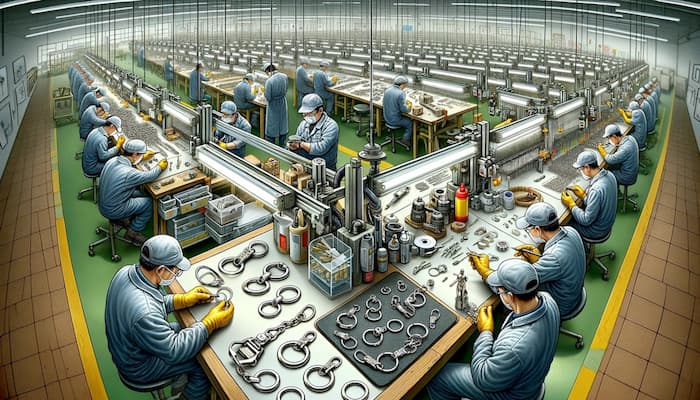
These are pivotal stages in the manufacturing process, ensuring both functionality and quality of the final product. Below is a description of these stages, with a particular focus on component assembly.
1) Component Assembly
Assembly of Parts: Once the metal part of the keyring (the main body) is detailed and finished, it is ready for assembly. This involves attaching other necessary components, such as rings, chains, or clips, which are essential for its functionality.
Types of Attachments: The most common attachment is a split ring, which is a loop of metal that can be pried open to slide keys onto. Other options might include snap hooks, ball chains, or link chains, depending on the design and intended use.
Methods of Attachment: The method of attachment will vary based on the components. It could involve simple manual assembly, like threading a chain through a hole in the keyring, or more complex mechanical assembly for parts that need to be securely fastened, like press-fitting or using specialised fasteners.
Customisation Options: Sometimes, additional decorative elements like charms, leather tags, or beads are added during this stage, further customizing the keyring.
2) Quality Control
Inspection for Defects: Each one undergoes a thorough quality control check. This includes inspecting for any physical defects like scratches, dents, or inconsistent finishes. The functionality of moving parts, such as the ease of opening a split ring, is also tested.
Consistency Check: Quality control also ensures consistency across the batch. This means checking that each keyring meets the pre-defined standards in terms of size, weight, and appearance.
Strength and Durability Tests: They might be subjected to strength and durability tests, such as pull tests, to ensure they can withstand normal usage without breaking.
Compliance with Standards: They are checked for compliance with any relevant standards or regulations, particularly if they are to be marketed in regions with specific requirements for metal products.
Final Approval: Only after passing these quality checks are they approved for packaging and distribution.
These stages are integral in ensuring that the final product is not only aesthetically pleasing but also functional and reliable. Attention to detail during assembly, combined with rigorous quality control procedures, ensures they meet both the manufacturer's and the customer's expectations. These stages underscore the commitment to delivering a high-quality product, reflecting the care and precision invested throughout the manufacturing process.
7. Packaging and Distribution
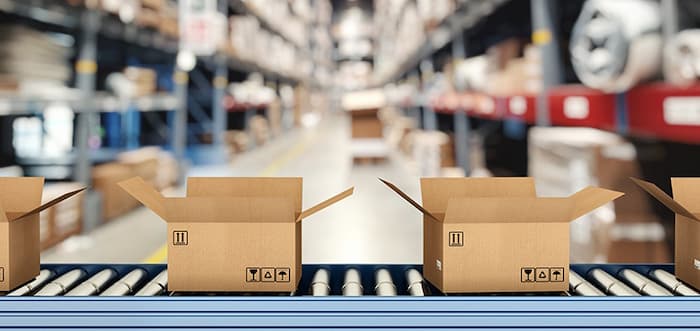
The final stages in the production are packaging and distribution. These stages are crucial as they not only protect the product but also add value and facilitate the keyrings' journey to the end user.
1) Packaging
Purpose of Packaging: Packaging serves multiple purposes. It protects the keyrings from damage during transit, makes storage easier, and provides an opportunity for branding and marketing.
Types of Packaging: The packaging can range from simple to elaborate, depending on the client's requirements and the intended market. Options include poly bags, velvet pouches, custom-designed boxes, blister packs, or even eco-friendly packaging materials for environmentally conscious brands.
Custom Packaging Design: Often, the packaging is customised to align with the promotional theme or the client's branding. This could involve printing the company's logo, using specific brand colours, or including marketing messages or instructions.
Added Value: Well-designed packaging can significantly enhance the perceived value, making it more appealing as a gift or promotional item.
Considerations for Retail: If they are intended for retail sale, the packaging may need to include additional elements like barcodes, price tags, or security features.
2) Distribution
Client's Requirements: The distribution process is tailored to meet the specific needs of the client. This could involve direct delivery to a single location, distribution to multiple outlets, or even direct shipping to individual recipients as part of a marketing campaign.
Modes of Transport: Depending on the size of the order and the geographical reach, various modes of transport may be used, including road, air, and sea freight. The choice of transport is influenced by factors like cost, delivery timeframes, and the fragility of the product.
Logistics and Handling: Proper logistics management is essential to ensure timely and safe delivery. This includes planning the best routes, handling customs clearances for international shipments, and coordinating with local delivery services.
Inventory Management: For larger orders or ongoing distributions, inventory management becomes crucial. This involves tracking stock levels, managing warehouse space, and ensuring a steady supply to meet demand.
The Lock Up
This journey from concept to completion involves a blend of creativity, precision engineering, and meticulous quality control, culminating in a promotional metal keyring that effectively represents the brand it's designed for.
The Keyrings Only Team

